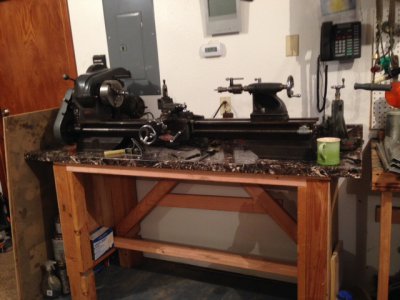- Joined
- Jan 8, 2014
- Messages
- 9
I picked up this 12X36 last weekend. I was having trouble finding a lathe here in Alaska. Not a lot of garage freindly lathes for sale. I was looking for a 618 to get shipped up here and this popped up on craigslist. I got some advice from a couple of guys which I really appreciated especially "T2" (Chris Scratch) and Toag. After I went and looked at it I had to have it. Its in pretty good shape and came with a 3jaw, 4 jaw, full set of gears, Milling attachment, taper attachment, as well as a bunch of other random stuff. I only talked him down a 100 bucks but got it for $1000. I think its a good deal considering how much freight is to alaska and how there are so few lathes available up here. I've never done any machine work before so this is a whole new world for me. I've needed a lathe for a long time and I couldn't be happier with my purchase. Now I just need to figure out how to use it particulalry centering my work in the chuck. I have the south bend book coming and have been watching tubalcain's videos but Im starting from the ground and hope to learn as much as I can in the upcoming months. Thanks, Jess



